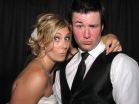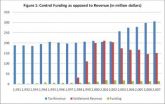The scientists studied cells from patients with Timothy syndrome, a rare genetic condition that is associated with one of the most penetrant forms of autism: In other words, most people with the Timothy syndrome mutation have autism as a symptom, among other problems.
Autism is a spectrum of developmental disorders of impaired social and verbal interaction. Currently, no medication exists to treat its underlying causes, according to the U.S. National Library of Medicine. Understanding what goes awry in autistic brain development could improve prospects for treating the condition.
In this study, the scientists suggest that the autism in Timothy syndrome patients is caused by a gene mutation that makes calcium channels in neuron membranes defective, interfering with how those neurons communicate and develop. The flow of calcium into neurons enables them to fire, and the way that the calcium flow is regulated is a pivotal factor in how our brains function.
The researchers also found brain cells grown from individuals with Timothy syndrome resulted in fewer of the kind of cells that connect both halves of the brain, as well as an overproduction of two of the brain's chemical messengers, dopamine and norepinephrine. Furthermore, they found they could reverse these effects by chemically blocking the faulty channels.
Postdoctoral scholar Sergiu Pasca, MD, and Ricardo Dolmetsch, PhD, associate professor of neurobiology, led the study, which will be published online Nov. 27 in Nature Medicine. Dolmetsch, a biophysicist, redirected his research to study autism after his son was diagnosed with Timothy syndrome. It's unclear what leads to autism, but its incidence is increasing, he said.
The gaps in our understanding of the causes of psychiatric disorders such as autism have made them difficult to treat. Perhaps the biggest obstacle to research into autism and other psychiatric and neurological diseases is that scientists can't get living brain cell samples from people with these conditions, for obvious reasons. Dolmetsch and his colleagues figured out a solution to this dilemma, using a novel approach involving what are known as induced pluripotent stem cells, or iPS cells.
"We developed a way of taking skin cells from humans with Timothy syndrome and converting them into stem cells, then converting those stem cells into neurons," said Dolmetsch.
The scientists grew these iPS cells as free-floating clumps in a nutrient-rich solution, later transferring the clumps to tissue culture plates. Here, some of them formed three-dimensional, brainlike spheres whose cells later migrated outward and matured into neurons. These neurons formed three distinct layers, a good first approximation of living tissue in the brain. By visualizing these neurons under a microscope and quantifying their gene expression, the scientists were able to characterize at the cellular level abnormalities that may be associated with autism.
The neurons grown from Timothy-syndrome iPS cells showed larger-than-normal spikes in calcium levels, suggesting the calcium channels lost their ability to shut off. This set off dramatic changes in neuronal signaling, reconfiguring how genes were expressed.
The cerebral cortex, the outer layer of the brain, has six distinct layers. In Timothy syndrome cell cultures, the proportion of neurons of specific layers differed from that in normal brains — additional biological evidence for the disorder. The neurons grown from the Timothy syndrome cells were less characteristic of lower-level neurons, which include neurons that bridge the left and right halves of the brain via the bundle of fibers known as the corpus callosum. This reinforces the view that autism results from defects in brain connectivity.
Pasca and Dolmetsch had an "aha" moment when they realized the neurons grown from Timothy syndrome cells were making too much of the enzyme most critical for producing dopamine and norepinephrine, which play an important role in sensory processing and social behavior. The realization may offer important clues about what causes the problems seen in autism.
To determine whether the enzyme upsurge was reversible, the scientists treated the neurons with a chemical that blocks the defective calcium channels, called roscovitine. They saw a nearly 70 percent reduction in the proportion of cells producing the enzyme, confirming the defective calcium channel was the culprit in producing too much dopamine and norepinephrine. Such reversibility suggests that certain cellular abnormalities in autism may be treatable.
Dolmetsch warned, however, that roscovitine is not currently approved for use in humans and has never been tested in children. While it is currently in clinical trials for lung cancer, it reportedly causes nausea and other side effects. "The reported side effects are probably due to the fact that, in addition to targeting the channel that is mutated in autism, roscovitine also inhibits kinases that are required for cell proliferation," he said. "We think that roscovitine is a good starting point, but probably has to be optimized before it would be useful for autism."
In the meantime, the study represents a major achievement with its success in developing a technique to recreate how the neurons of individuals with Timothy syndrome develop in a lab setting. It's the first time it's been possible to study the disorder in human cells rather than mouse cells, so it represents a better clinical model, Dolmetsch said.
"These results could lead to a very powerful research tool," he said. "It's human psychiatric disease in a petri dish."
###
Researchers from UCLA contributed to the study. Other authors from Stanford were postdoctoral scholars Thomas Portmann, PhD, Masayuki Yazawa, PhD, and Oleksandr Shcheglovitov, PhD; clinical researcher Anca Pasca, MD; neurology researcher Branden Cord MD, PhD; associate professor of neurosurgery Theo Palmer, PhD; Sachiko Chikahisa, PhD, and research professor of psychiatry and behavioral sciences Nishino Seiji, MD, PhD, both of the Sleep and Circadian Neurobiology Laboratory; clinical assistant professor of medical genetics Jonathan Bernstein, MD, PhD; and associate professor of psychiatry and behavioral sciences Joachim Hallmayer, MD.
Financial support was provided by the National Institutes of Health, Simons Foundation Grant, International Brain Research Organization, the Tashia and John Morgridge Endowed Fellowship, Japan Society of the Promotion for Science, American Heart Association Western States, the Swiss National Science Foundation, the California Institute for Regenerative Medicine and several individual donors. Information about the Department of Neurobiology, in which the study was conducted, is available at http://neurobiology.stanford.edu/.
The Stanford University School of Medicine consistently ranks among the nation's top medical schools, integrating research, medical education, patient care and community service. For more news about the school, please visit http://mednews.stanford.edu. The medical school is part of Stanford Medicine, which includes Stanford Hospital & Clinics and Lucile Packard Children's Hospital. For information about all three, please visit http://stanfordmedicine.org/about/news.html.
PRINT MEDIA CONTACT: Bruce Goldman at (650) 725-2106 (goldmanb@stanford.edu)
BROADCAST MEDIA CONTACT: M.A. Malone at (650) 723-6912 (mamalone@stanford.edu)
END


